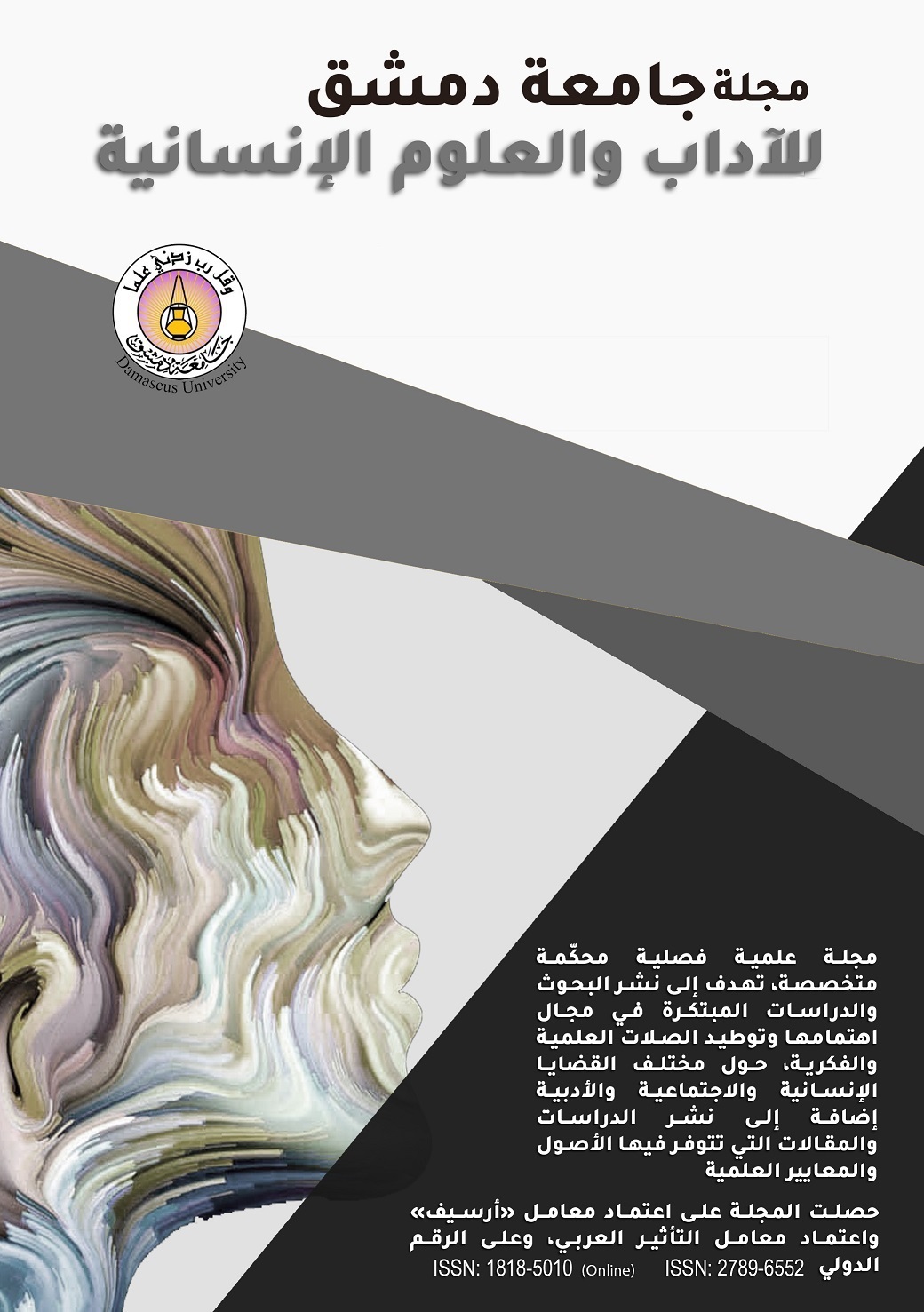The Narrative Scene in Diwan Lisan Aldiyn Ibn Alkhatib
Keywords:
المشهد الحكائي في ديوان لسان الدين ابن الخطيبAbstract
Andalusian poetry is rich in science and rich in all the knowledge that needs to be investigated and studied, it has many potential artistic and creative energies that encourage the researcher to examine them and investigate the relevant phenomena. Andalusian poetry involves authentic values capable of sustainability. It extends over a wide period of time, which makes the field of research broad. This research represents a new reading in the Diwan of Lisan Al-Din Ibn al-Khatib, and an applied study of modern critical concepts on the texts of his poetry to reveal the extent of the presence of critics acquainted with modern narrative techniques, and the extent of the poet’s familiarity with these techniques, and the availability of anecdotal elements in his poetry. The importance of the subject stems from the interrelationship between two literary genres, each with its own characteristics. Poetry is a rhymed form, and the story is prose with its own rules, origins and artistic elements. This research deals with the phenomenon of narrative scene in the Diwan of Lisan Deen Ibn al-Khatib, which is reflected in various themes, reflecting part of the poet’s life. Therefore, the study examines the concept of poetic narrative, and then addresses the elements of artistic stories in the scenes of Ibn al-Khatib's poetry in terms of characters, events, methods of narrative and dialogue, and the two environments Temporal and spatial. It reveals its significance and aesthetic dimension, probing its depths and revealing its aspects by analyzing the poet's apparent and implicit intentions and the extent of their impact on the recipient's conscience. The study concludes the final findings.

